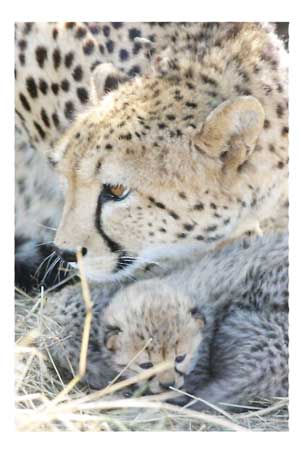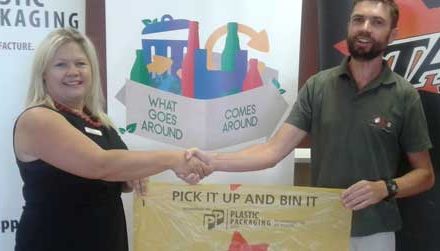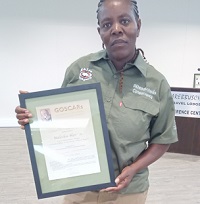
Cheetah cubs born in Okonjima Nature Reserve

Dizzy with her three cubs (Photograph contributed by AfriCat)
Dizzy was caught at about eight months old, in the Windhoek area without her mother and siblings and was introduced to four young orphans of roughly the same age as her. This formed a man-made coalition with males and females in one group. On 1 June 2012, she was released together with the group into the 20,000 hectare Okonjima Nature Reserve, which marked the start of her rehabilitation process.
Dizzy broke away from the group and was seen to be adapting well to life in the wild, unlike her group mates. On 14 December, the others had to come back into captivity. She was seen mating with another successfully rehabilitated male cheetah early January 2013 and she gave birth to three healthy cubs.
AfriCat’s Cheetah Rehabilitation project was initiated to give some of its captive cheetahs an opportunity to return to their natural environment. Although hunting in carnivores is instinctive, many of the cheetahs at AfriCat lack experience due to being orphaned or removed
from the wild at an early age. This inexperience, as well as their conditioning to captivity, makes the animals unsuitable for release on farmland. The cheetahs, usually a coalition of brothers and sisters, are fitted with radio-collars before their release into the camp so that their welfare and progress can be closely monitored. Once they can prove that they can hunt for themselves and cope on their own, they can be relocated to a private game reserve, where their progress will continue to be monitored. Rehabilitated cheetahs are not released on farmland.












































